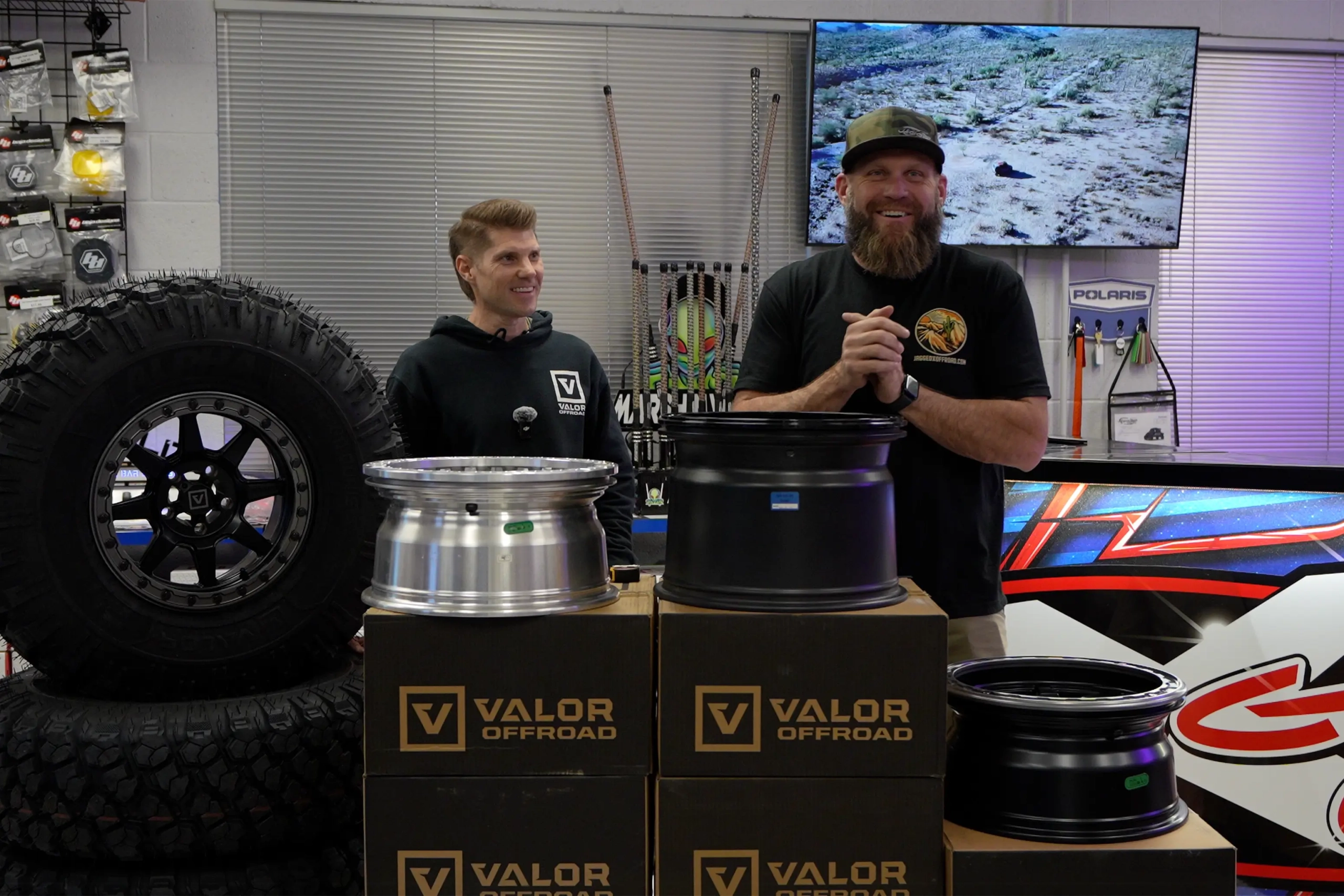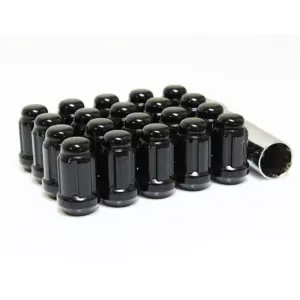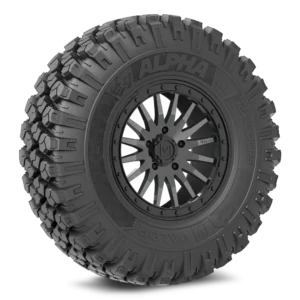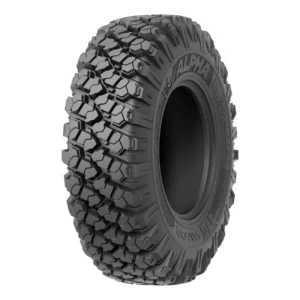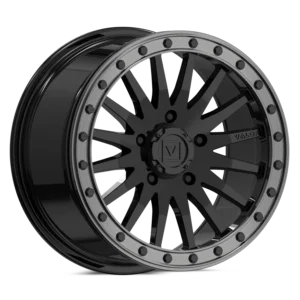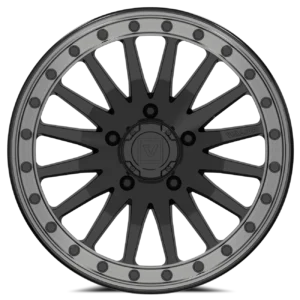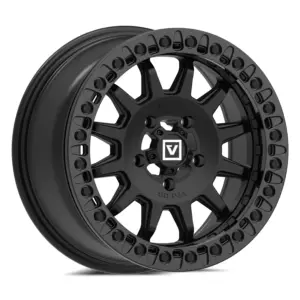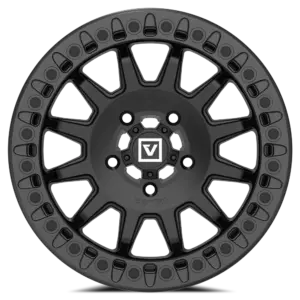Whether you're building a race-ready Polaris RZR Pro R or outfitting your Polaris XPEDITION for weekend adventures, understanding UTV wheels and their specifications is crucial for optimal performance and safety. At Jagged X OffRoad, we've partnered with industry leaders like Valor Off-Road to bring you the definitive guide on UTV and SxS wheel selection.
Understanding Wheel Terminology
The foundation of wheel fitment starts with backspacing - the measurement from the wheel's mounting pad to the outer lip of the wheel.
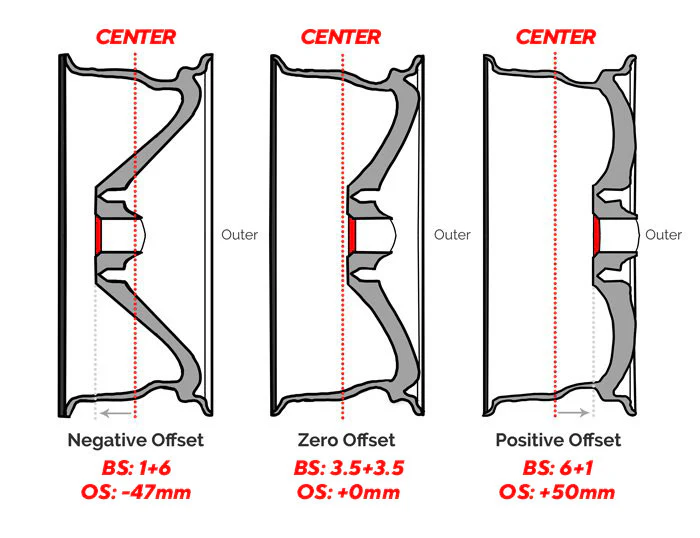
Image credit: valoroffroad.com - Technical diagram illustrating wheel offset measurements
Offset, on the other hand, is identified on the front of the wheel and determines where the wheel will sit. A higher offset positions the wheel more inside the vehicle.
Zero Offset vs. No Offset: Understanding the Difference
A common misconception in the UTV community is confusing zero offset with no offset. A zero offset wheel has the mounting pad directly in the center - for an 8-inch wide wheel, this means 4 inches on each side, creating a deep lip appearance and pushing the wheel out from stock position.
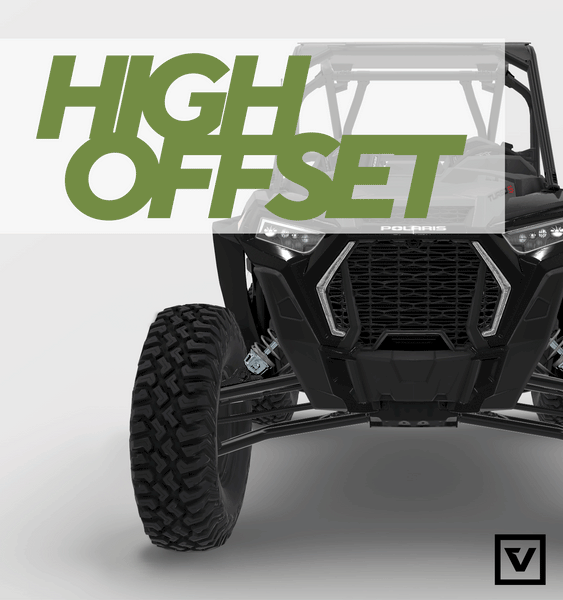
Image credit: valoroffroad.com - Demonstrating offset wheel fitment on a UTV
Performance Benefits of High Offset
For racing applications, particularly on vehicles like the Polaris RZR Pro R and Turbo R, high offset wheels offer several advantages:
- Improved steering response
- Better turning radius
- Enhanced suspension performance
- Optimal weight distribution by keeping components closer to the vehicle
Regional and Vehicle-Specific Considerations
While high offset setups excel in Arizona's rocky terrain and racing applications, different vehicles have unique requirements. The Polaris XPEDITION, for example, often benefits from a wider stance to improve stability, which can be achieved without long travel kits or wheel spacers.
Wheel and Tire Compatibility
In the UTV world, most combinations are compatible, with some standard guidelines:
- The typical wheel width is 15x7 inches
- Racing applications may use narrower 6-inch wheels
- 8-inch wheels provide extra stance and increased ground contact
- Wider setups improve stability and ground contact patch
Important Considerations and Warnings
When selecting wheels and tires:
- Avoid using light truck tires on UTV wheels
- Watch for "ballooning" effects with mismatched combinations
- Ensure proper tire-to-wheel width ratios for optimal performance
Precision in Measurements
For the most accurate fitment, always use millimeter measurements rather than general offset ranges. While terms like "5+2" or "4+3" provide general guidance, they're not completely accurate. Using millimeter offsets ensures you get the exact fitment you're looking for.
Contact Jagged X Off-Road today for expert guidance on selecting the perfect wheel and tire combination for your UTV or Side-by-Side. Whether you're racing a Polaris RZR Pro R or exploring trails in your XPEDITION, we'll help you achieve the optimal setup for your riding style and terrain.


